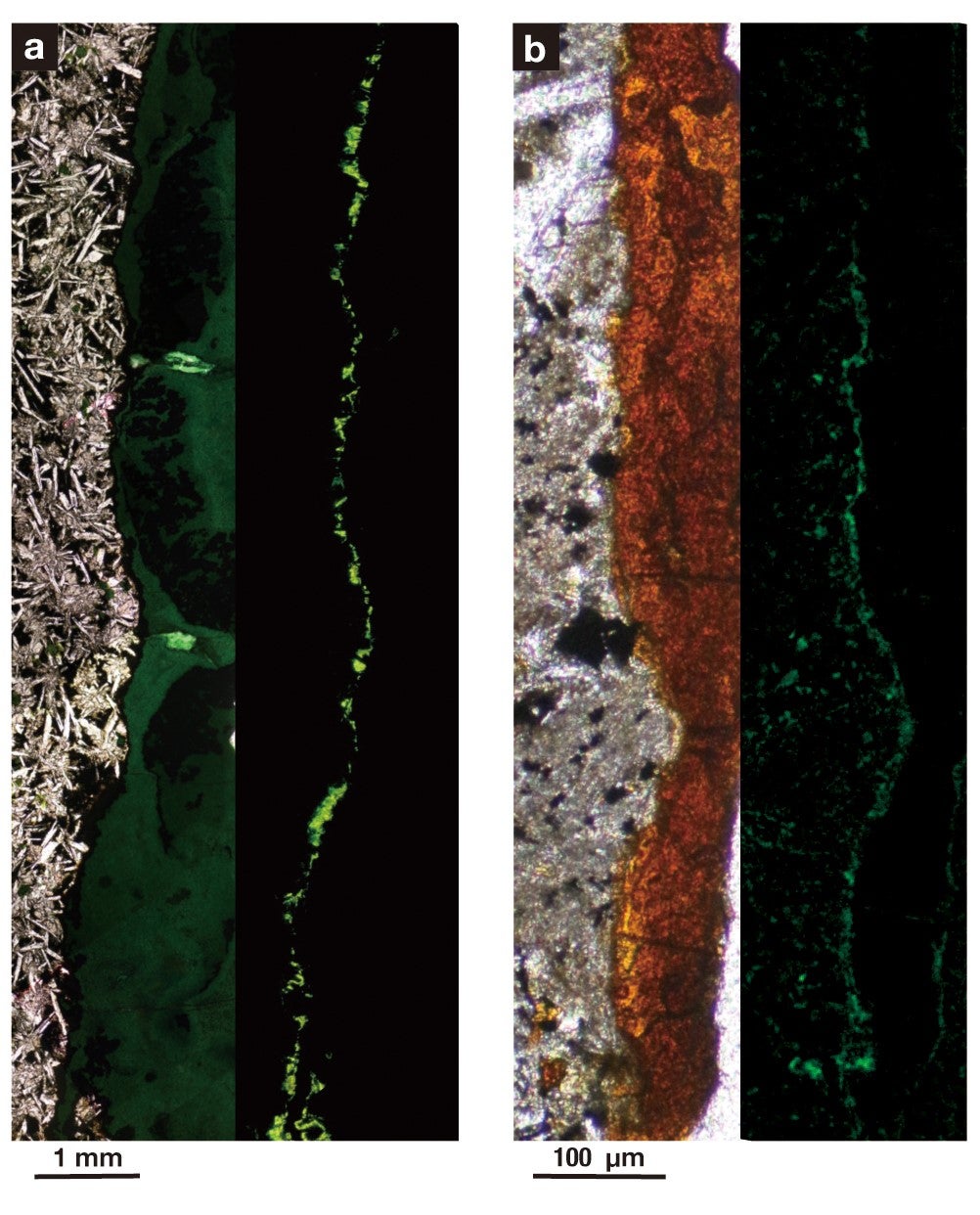'I thought it was a dream': Creatures found deep beneath the sea give hope for life on Mars
'I am now almost over-expecting that I can find life on Mars,' says scientist
Your support helps us to tell the story
From reproductive rights to climate change to Big Tech, The Independent is on the ground when the story is developing. Whether it's investigating the financials of Elon Musk's pro-Trump PAC or producing our latest documentary, 'The A Word', which shines a light on the American women fighting for reproductive rights, we know how important it is to parse out the facts from the messaging.
At such a critical moment in US history, we need reporters on the ground. Your donation allows us to keep sending journalists to speak to both sides of the story.
The Independent is trusted by Americans across the entire political spectrum. And unlike many other quality news outlets, we choose not to lock Americans out of our reporting and analysis with paywalls. We believe quality journalism should be available to everyone, paid for by those who can afford it.
Your support makes all the difference.Scientists have found "dense" communities of creatures living deep beneath the sea, in a discovery that gives hope that similar life could be found on Mars.
Volcanic rock more than 100 metres underneath the sea floor was discovered to be "teeming" with creatures, according to the new report.
The discovery suggests that other, similar environments – such as that of the red planet – could also be havens for life.
"I thought it was a dream, seeing such rich microbial life in rocks," said Yohey Suzuki from the University of Tokyo, an author on the paper announcing the discovery in Communications Biology.
"I am now almost over-expecting that I can find life on Mars," he said. "If not, it must be that life relies on some other process that Mars does not have, like plate tectonics."
The tiny cracks in ancient rocks have a community of bacteria that is roughly as dense as the human gut, the researchers say. At about 10 billion bacterial cells per cubic centimeter, they are vastly more populated than the average mud sediment on the sea floor, which is estimated to be about 100 cells per cubic centimeter.
The single-celled creatures were discovered by researchers who took a decade of trial and error to try and examine the rocks deep beneath the sea. When they did manage to study them, they found that the cracks were actually a "very friendly" place for life, teeming with creatures.
"Honestly, it was a very unexpected discovery. I was very lucky, because I almost gave up," said Professor Suzuki.
The cracks are formed when lava is thrown out of undersea volcanoes, with a temperature of about 1,200 degrees Celsius. As the lava cools, it turns into rock and cracks.
Those tiny breaks in the rock usually measure less than a millimetre across. With time, the cracks are filled up with clay minerals, like that used to make pottery, and bacteria then find their way into that and multiply.
"Clay minerals are like a magic material on Earth; if you can find clay minerals, you can almost always find microbes living in them," said Professor Suzuki.
The creatures found in the cracks are aerobic bacteria, that make energy through a similar process to that of humans, using oxygen and organic nutrients. But they are living in an environment that scientists expect to be similar to that inside rocks on Mars.
"Minerals are like a fingerprint for what conditions were present when the clay formed. Neutral to slightly alkaline levels, low temperature, moderate salinity, iron-rich environment, basalt rock -- all of these conditions are shared between the deep ocean and the surface of Mars," said Professor Suzuki.
The researchers now hope to work with Nasa to conduct a similar examination of rocks collected by rovers on the Martian surface. Possible techniques include scanning the rocks with a CT scanner, in the hope of discovering life lurking inside.
"This discovery of life where no one expected it in solid rock below the seafloor may be changing the game for the search for life in space," said Professor Suzuki in a statement.
Though the article describing the discovery is published today, the rock samples that prompted it were collected in 2010. They came from a drilling programme that extended a huge metal tube from a research ship, digging down beneath the seafloor and bringing up samples from the sediment and rock that is underneath.
They gathered rock samples that were 13.5 million, 33.5 million and 104 million years old.
Importantly, the rocks were not taken from nearby any vents or water channels that might have pushed bacteria from elsewhere into the cracks. That allows the researchers to be confident that they had arrived in the cracks independently.
Initial examination of the rocks found none of the bacteria that Professor Suzuki hoped to discover inside. But the breakthrough came when the team were able to slice of thin sheets of the rock, stain them with a special dye that lights up any DNA, and look at them through a microscope.
They saw the bacteria living inside as glowing green spheres that had been tightly packed into glowing orange tunnels. The orange glow was the clay mineral deposits that made the cracks such an attractive place to live for the creatures that stayed there.

The paper, 'Deep microbial proliferation at the basalt interface in 33.5-104 million-year-old oceanic crust', is published today.

Join our commenting forum
Join thought-provoking conversations, follow other Independent readers and see their replies
Comments